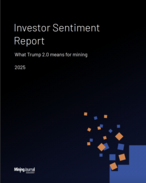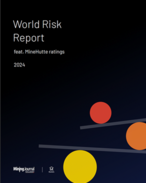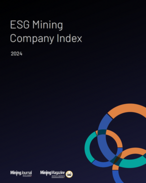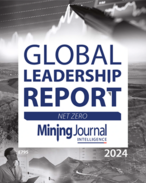For years private equity was the ugly duckling for miners looking at funding options or asset sales.
The commodity bust post-2011, destroyed confidence in mining for PE investors, and the industry got a bad name for aggressive gearing and short termism.
PE groups found themselves competing among themselves in a nasty cyclical downturn, and sentiment took a turn for the worse.
Until now.
Private equity has jumped on the decarbonisation bandwagon, with critical minerals the target.
It's easy to see the logic. The funding of strategic metals has attracted government support, bolstering PE investor-sentiment.
What's more, investors, especially pension funds, are eager to flout their ESG credentials. Not so long ago, in the minds of some, mining was linked to coal and pollution. Now, critical minerals are viewed as key to facilitate the green transition.
PE groups such as Appian Capital, Vision Blue Resources (headed by former Xstrata boss Mick Davis), Orion Finance, and Energy & Minerals Group, to name a few, have unveiled a plethora of deals this year.
"We're seeing a transition in this space," said David Rhodes, managing director of Endeavour Financial, which has helped raise $10 billion for miners worldwide.
"Government support to the sector also helps to give the sector confidence -- we've just got to get this going," Rhodes told S&P Global.
Transactions are rolling thick and fast. Dublin-based private investment group TechMet, backed by Washington, has raised millions to develop almost a dozen projects in its critical minerals portfolio, including Cornish Lithium.
One analyst said: "The same ESG pressures long-familiar in public markets have manifested themselves increasingly in private markets. These questions reflect the pressures that family offices and public pensions have been under from stakeholders and politicians."
Looking at the PE market generally, the industry has enjoyed strong tailwinds since the global financial crisis as interest rates stayed low and credit availability was high.
But what now as inflation and higher interest rates bite? Some of PE's exuberance has tailed off as banks have pulled back, capping leverage. Sure, we are a long way from the last slump - few funds have abandoned commitment plans entirely or sold portfolios as they did 15 years ago. But a report by Mckinsey said many have "pulled back, particularly from smaller and newer funds, causing fundraising to decline".
According to Mckinsey, PE deal volume decreased 26% last year but was still the second most active year on record.
The future, however, looks healthy enough, black swans permitting. Bain & Co reckons PE has $3.7 trillion worth of dry powder to deploy as of end-2022!
What's working in PE's favour is the fact that more fund managers are incorporating ESG factors into their corporate policies, and this trend is likely to accelerate. In 2022, 1,069 more public and private investors committed to the United Nations Principles for Responsible Investment, said Mckinsey. "The proportion of total private capital fundraising that came from managers with an investment policy that includes ESG issues rose to 66% in 2022, a new high."
For miners involved in the critical minerals space, data suggests a positive correlation between ESG and financial performance. New government policies that provide incentives for certain ESG investments—most notably the US Inflation Reduction Act of 2022—are expected to strengthen this correlation further.
A recent survey showed 75% of global PE groups would consider eliminating managers who were unable to provide acceptable standards of ESG-related disclosures.
Bain & Co said the industry sees ESG-linked investments as a way to promote and financially boost an acquired company's performance.
But investing in mining (in particular, smaller miners with single assets) comes with risks, too. As miners know all too well, the investing landscape is clouded by regulatory risk, permitting delays, resource nationalism and water shortages. Importantly, PE has a relatively short-term time horizon with investors often looking for decent returns after five years, not ten - the time needed to get some mines up and running from the exploration phase to production.
For those PE groups with fruity gearing levels, careful balance-sheet-monitoring is needed to avoid debt defaults if interest rates rise.
Despite the allure of mining at a time when globalisation is giving way to regional blocs and a rise in protectionism - the cyclical and sometimes volatile mining sector will always be a constraining factor.
That said, PE has once again become a serious funding option for those miners involved in decarbonisation after years of inactivity.
ESG and government support have bolstered sentiment and recent deal flow shows PE has a spring in its step.





















LONDON TO A BRICK
Turbocharged private equity roars back
What's behind the recent spate of deals?
This article is 1 year old. Images might not display.
For years private equity was the ugly duckling for miners looking at funding options or asset sales.
The commodity bust post-2011, destroyed confidence in mining for PE investors, and the industry got a bad name for aggressive gearing and short termism.
PE groups found themselves competing among themselves in a nasty cyclical downturn, and sentiment took a turn for the worse.
Until now.
Private equity has jumped on the decarbonisation bandwagon, with critical minerals the target.
It's easy to see the logic. The funding of strategic metals has attracted government support, bolstering PE investor-sentiment.
What's more, investors, especially pension funds, are eager to flout their ESG credentials. Not so long ago, in the minds of some, mining was linked to coal and pollution. Now, critical minerals are viewed as key to facilitate the green transition.
PE groups such as Appian Capital, Vision Blue Resources (headed by former Xstrata boss Mick Davis), Orion Finance, and Energy & Minerals Group, to name a few, have unveiled a plethora of deals this year.
"We're seeing a transition in this space," said David Rhodes, managing director of Endeavour Financial, which has helped raise $10 billion for miners worldwide.
"Government support to the sector also helps to give the sector confidence -- we've just got to get this going," Rhodes told S&P Global.
Transactions are rolling thick and fast. Dublin-based private investment group TechMet, backed by Washington, has raised millions to develop almost a dozen projects in its critical minerals portfolio, including Cornish Lithium.
One analyst said: "The same ESG pressures long-familiar in public markets have manifested themselves increasingly in private markets. These questions reflect the pressures that family offices and public pensions have been under from stakeholders and politicians."
Looking at the PE market generally, the industry has enjoyed strong tailwinds since the global financial crisis as interest rates stayed low and credit availability was high.
But what now as inflation and higher interest rates bite? Some of PE's exuberance has tailed off as banks have pulled back, capping leverage. Sure, we are a long way from the last slump - few funds have abandoned commitment plans entirely or sold portfolios as they did 15 years ago. But a report by Mckinsey said many have "pulled back, particularly from smaller and newer funds, causing fundraising to decline".
According to Mckinsey, PE deal volume decreased 26% last year but was still the second most active year on record.
The future, however, looks healthy enough, black swans permitting. Bain & Co reckons PE has $3.7 trillion worth of dry powder to deploy as of end-2022!
What's working in PE's favour is the fact that more fund managers are incorporating ESG factors into their corporate policies, and this trend is likely to accelerate. In 2022, 1,069 more public and private investors committed to the United Nations Principles for Responsible Investment, said Mckinsey. "The proportion of total private capital fundraising that came from managers with an investment policy that includes ESG issues rose to 66% in 2022, a new high."
For miners involved in the critical minerals space, data suggests a positive correlation between ESG and financial performance. New government policies that provide incentives for certain ESG investments—most notably the US Inflation Reduction Act of 2022—are expected to strengthen this correlation further.
A recent survey showed 75% of global PE groups would consider eliminating managers who were unable to provide acceptable standards of ESG-related disclosures.
Bain & Co said the industry sees ESG-linked investments as a way to promote and financially boost an acquired company's performance.
But investing in mining (in particular, smaller miners with single assets) comes with risks, too. As miners know all too well, the investing landscape is clouded by regulatory risk, permitting delays, resource nationalism and water shortages. Importantly, PE has a relatively short-term time horizon with investors often looking for decent returns after five years, not ten - the time needed to get some mines up and running from the exploration phase to production.
For those PE groups with fruity gearing levels, careful balance-sheet-monitoring is needed to avoid debt defaults if interest rates rise.
Despite the allure of mining at a time when globalisation is giving way to regional blocs and a rise in protectionism - the cyclical and sometimes volatile mining sector will always be a constraining factor.
That said, PE has once again become a serious funding option for those miners involved in decarbonisation after years of inactivity.
ESG and government support have bolstered sentiment and recent deal flow shows PE has a spring in its step.
RELATED ARTICLES
TOPICS:
< PREVIOUS ARTICLE
Lifting the lid on the copper price
NEXT ARTICLE >
Is Europe warming to mining?
Get the Mining Journal Newsletter delivered free each day
FROM OUR PARTNERS
PARTNER CONTENT
Macquarie Arc: Elephants hiding in plain sight
PARTNER CONTENT
BHP builds 'beautiful' Xplor community